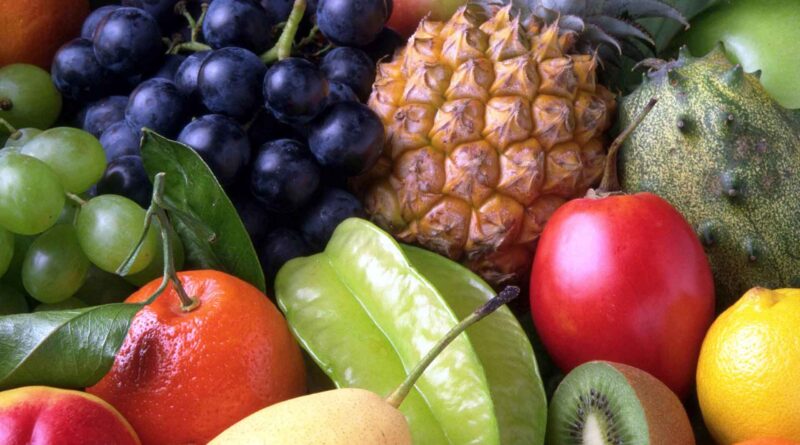Get more nutrition in every bite
Smart Strategies for Nutrient-Dense Eating
In our fast-paced world where time is limited and food choices are abundant, learning how to get more nutrition in every bite has become an essential skill for maintaining health and vitality. Rather than focusing on eating less or counting calories, the smarter approach involves maximizing the nutritional value of each mouthful. This philosophy of nutrient density means choosing foods that deliver the highest concentration of vitamins, minerals, fiber, and antioxidants relative to their calorie content. By making strategic choices about what we eat and how we prepare it, we can transform ordinary meals into extraordinary sources of nourishment.
Understanding Nutrient Density: The Foundation
What Makes Food Nutrient-Dense?
The concept of getting more nutrition in every bite begins with understanding nutrient density—the ratio of nutrients to calories in any given food. Consider these comparisons:
Leafy greens vs. iceberg lettuce: While both are vegetables, kale and spinach provide significantly more vitamins A, C, and K per calorie than iceberg lettuce, making them superior choices for nutrition optimization.
Quinoa vs. white rice: Both can be carbohydrate sources, but quinoa delivers complete protein, fiber, and essential minerals where white rice offers mostly empty calories with minimal micronutrients.
Berries vs. fruit snacks: Fresh or frozen berries provide antioxidants, fiber, and vitamins, while fruit-flavored snacks often contain more sugar than fruit.
This understanding allows you to make choices that naturally increase the nutrition you receive from each eating occasion without necessarily eating more food.
The Color-Nutrition Connection
One of the simplest ways to get more nutrition in every bite is to embrace colorful eating. The pigments that give fruits and vegetables their vibrant colors often correspond to specific beneficial compounds:
Red foods (tomatoes, watermelon) typically contain lycopene, associated with heart health and cancer prevention.
Orange and yellow foods (carrots, sweet potatoes, squash) are rich in beta-carotene, which converts to vitamin A and supports vision and immune function.
Green foods (spinach, broccoli, kale) provide chlorophyll, folate, and isothiocyanates that support detoxification and cellular health.
Purple and blue foods (blueberries, eggplant, red cabbage) contain anthocyanins, powerful antioxidants that protect against inflammation and oxidative stress.
By ensuring each meal contains multiple colors, you automatically diversify the nutrients you consume with each bite.
Strategic Food Selection for Maximum Nutrition
Upgrade Your Carbohydrates
Transforming your carbohydrate choices is one of the most effective ways to get more nutrition in every bite:
Choose whole grains over refined: Swap white bread for whole grain, white rice for brown or wild rice, and regular pasta for whole wheat or legume-based alternatives. The whole versions retain their bran and germ, where most of the fiber, B vitamins, and minerals reside.
Embrace ancient grains: Foods like amaranth, teff, and farro often contain higher protein levels and more diverse micronutrient profiles than modern wheat varieties.
Don’t forget starchy vegetables: Sweet potatoes, winter squash, and parsnips provide complex carbohydrates along with fiber, vitamins, and antioxidants that white potatoes lack.
Maximize Protein Quality
The protein sources you choose significantly impact the nutrition you get from each bite:
Prioritize plant proteins: Legumes, lentils, and tofu provide protein along with fiber, antioxidants, and phytochemicals that animal proteins lack.
Select lean animal proteins: When choosing animal products, opt for skinless poultry, fish, and lean cuts of meat to reduce saturated fat intake while maintaining high-quality protein.
Incorporate seafood twice weekly: Fatty fish like salmon and sardines provide omega-3 fatty acids along with protein, offering dual nutritional benefits in each bite.
Smart Fat Selection
Dietary fats can either empty calories or nutrient powerhouses:
Focus on unsaturated sources: Avocados, nuts, seeds, and olive oil provide healthy fats along with vitamin E, phytosterols, and other beneficial compounds.
Limit processed fats: Highly processed oils and trans fats offer calories with minimal nutritional return, while whole food fat sources deliver additional nutrients.
Don’t fear natural fats: The fats naturally present in whole foods like nuts, seeds, and seafood come packaged with other valuable nutrients, making them efficient choices for nutrition per bite.
Preparation Methods That Preserve and Enhance Nutrition
Cooking Techniques Matter
How you prepare food significantly impacts how much nutrition remains in each bite:
Steaming over boiling: Water-soluble vitamins like vitamin C and many B vitamins leach into cooking water. Steaming vegetables preserves more of these delicate nutrients.
Quick-cook methods: Sautéing, stir-frying, and roasting for shorter times at appropriate temperatures help preserve heat-sensitive nutrients.
Proper storage: How you store foods before cooking matters too. For example, storing tomatoes at room temperature rather than in the refrigerator helps preserve their vitamin C content.
Strategic Food Combinations
Some preparation methods can actually enhance the nutrition you get from each bite:
Fat-soluble vitamin activation: Adding a small amount of healthy fat to vegetables like carrots, tomatoes, and leafy greens improves your absorption of fat-soluble vitamins A, D, E, and K.
Iron absorption enhancement: Consuming vitamin C-rich foods alongside plant-based iron sources (like beans or spinach) can significantly increase iron absorption.
Allium family activation: Chopping or crushing garlic and onions and letting them sit for 10-15 minutes before cooking activates beneficial enzyme systems that would be destroyed by immediate heat application.
Simple Swaps for Immediate Nutritional Upgrade
Breakfast Transformations
Start your day with more nutrition in every bite:
Instead of sugary cereal: Choose plain oatmeal topped with berries, nuts, and a drizzle of honey for fiber, antioxidants, and healthy fats.
Instead of white toast with jam: Opt for whole grain toast with avocado or nut butter for sustained energy and nutrient diversity.
Instead of fruit juice: Eat whole fruit to get the fiber that’s lost in juicing, which helps regulate blood sugar and increases satiety.
Lunch and Dinner Enhancements
Elevate your main meals effortlessly:
Instead of plain salads: Add protein (chicken, fish, beans), healthy fats (avocado, nuts, olive oil), and a variety of colorful vegetables to transform a simple salad into a nutrient powerhouse.
Instead of white pasta with jarred sauce: Choose whole grain pasta and make a quick sauce with crushed tomatoes, garlic, herbs, and finely chopped vegetables for exponentially increased nutrition.
Instead of mashed potatoes: Try mashed cauliflower or a potato-cauliflower blend for more vitamins and fewer calories per bite.
Snack Solutions
Turn between-meal bites into nutritional opportunities:
Instead of chips: Enjoy roasted chickpeas or edamame for protein and fiber along with satisfying crunch.
Instead of candy: Choose a small handful of nuts and dried fruit for natural sweetness with beneficial fats, protein, and fiber.
Instead of flavored yogurt: Opt for plain Greek yogurt and add your own fresh fruit and a drizzle of honey to avoid added sugars while increasing protein.
The Mindful Eating Advantage
How Attention Amplifies Nutrition
The practice of mindful eating can help you get more nutrition in every bite in unexpected ways:
Improved digestion: Eating slowly and chewing thoroughly begins the digestive process in the mouth, potentially increasing nutrient absorption later in the digestive tract.
Enhanced satisfaction: When you pay attention to your food, you tend to feel more satisfied with less, allowing you to focus on quality over quantity.
Better food choices: Mindfulness creates space between impulse and action, helping you choose more nutrient-dense options rather than reaching for empty calories automatically.
Practical Mindful Eating Techniques
Incorporate these habits to enhance the nutrition you derive from meals:
The first bite focus: Pay special attention to the first bite of each food, noting its texture, flavor, and aroma. This sets the stage for more conscious eating throughout the meal.
Between-bite pauses: Put your utensil down between bites to slow your eating pace and improve digestion and satisfaction.
Gratitude reflection: Taking a moment to appreciate where your food came from and how it will nourish your body enhances the eating experience and reinforces positive food relationships.
Supplementing Wisely for Nutritional Gaps
When Food Isn’t Enough
Even with careful eating, some nutrients can be challenging to obtain in optimal amounts:
Vitamin D: Difficult to get from food alone, especially in northern climates or with limited sun exposure.
Omega-3s: While available in fish, many people don’t consume enough to meet optimal levels.
Specific life stage needs: Pregnancy, aging, or certain health conditions may create increased needs for specific nutrients.
Strategic Supplementation
If supplements are necessary, choose wisely to complement your food-based nutrition:
Targeted approach: Rather than taking a multivitamin “just in case,” identify specific deficiencies or increased needs through testing or medical advice.
Quality matters: Look for third-party tested supplements from reputable manufacturers to ensure what’s on the label is in the bottle.
Food-first philosophy: View supplements as complements to, not replacements for, nutrient-dense food choices.
Building Lasting Habits for Nutritional Excellence
The Progressive Approach
Sustainable change happens through small, consistent improvements:
One change at a time: Focus on implementing one nutritional upgrade each week rather than overhauling your entire diet at once.
The 80/20 principle: Aim for nutrient-dense choices 80% of the time, allowing flexibility for less optimal choices 20% of the time without guilt.
Continuous learning: Stay curious about nutrition science and be willing to adjust your approach as new information emerges.
Creating a Supportive Environment
Your surroundings significantly influence your ability to get more nutrition in every bite:
Kitchen setup: Keep washed, cut vegetables at eye level in your refrigerator and healthy snacks readily available.
Grocery strategy: Shop the perimeter of the grocery store where whole foods are typically located and make a list to avoid impulse purchases of nutrient-poor items.
Social support: Share your nutritional goals with supportive friends or family members who can encourage your efforts.
The Long-Term Benefits of Nutrient-Dense Eating
Beyond Basic Nutrition
Focusing on getting more nutrition in every bite offers benefits that extend far beyond meeting basic nutritional requirements:
Sustainable energy: Nutrient-dense foods provide steady energy without the crashes associated with processed foods and sugar.
Healthy aging: Antioxidant-rich foods combat oxidative stress associated with aging and chronic disease.
Mental clarity: Proper nutrition supports cognitive function and may help maintain mental sharpness.
Reduced disease risk: A diet rich in diverse nutrients supports immune function and reduces inflammation linked to many chronic conditions.
The Cumulative Effect
The power of getting more nutrition in every bite lies in its cumulative nature. While one nutrient-dense meal makes a small difference, the compound effect of consistently choosing foods rich in vitamins, minerals, and beneficial compounds can transform your health over months and years. Each smart food choice builds upon the previous one, creating a foundation of wellness that supports every aspect of your life.
By embracing the principle of maximizing nutrition in every bite, you’re not just eating—you’re investing in your long-term health, vitality, and quality of life. The food choices you make today literally become the building blocks of your body tomorrow. With each nutrient-dense bite, you’re taking an active role in creating a healthier, more vibrant future for yourself.




